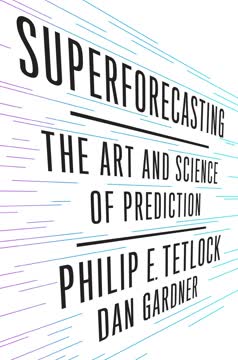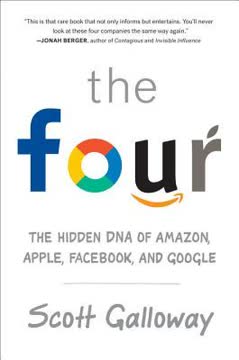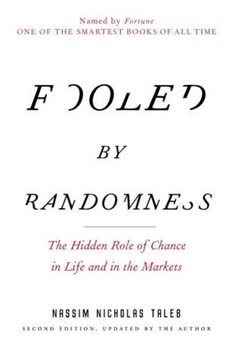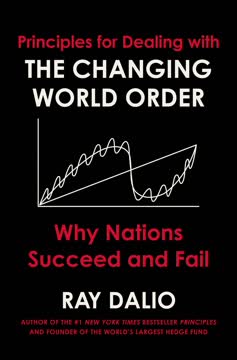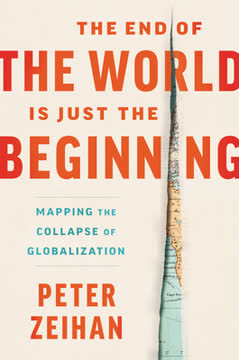نکات کلیدی
1. انعکاسپذیری: ارتباط دوطرفه بین تفکر و واقعیت
بین تفکر و واقعیت یک ارتباط دوطرفه وجود دارد که وقتی بهطور همزمان عمل میکند، عنصر عدم قطعیت را به تفکر شرکتکنندگان و عنصر عدمقطعیت را به روند رویدادها وارد میکند.
توضیح انعکاسپذیری. انعکاسپذیری یک مفهوم کلیدی در نظریهی جورج سوروس است که تأکید میکند بین افکار مردم و دنیای واقعی یک رابطهی دایرهای وجود دارد. این رابطه یک حلقهی بازخورد ایجاد میکند که در آن ادراکات بر واقعیت تأثیر میگذارد و واقعیت نیز به نوبهی خود ادراکات را شکل میدهد. در بازارهای مالی، این موضوع بهصورت تأثیر باورهای سرمایهگذاران بر قیمتهای بازار و سپس تأثیر این قیمتها بر اصول اقتصادی زیرین بروز میکند.
تأثیر بر بازارهای مالی. این مفهوم نظریهی اقتصادی غالب را که بازارها به سمت تعادل تمایل دارند به چالش میکشد. سوروس استدلال میکند که بازارها بهدلیل این رابطهی انعکاسی میتوانند ذاتاً ناپایدار باشند. این ناپایداری میتواند منجر به چرخههای رونق و رکود، حبابها و سقوطهایی شود که بهخوبی توسط مدلهای اقتصادی سنتی توضیح داده نمیشوند.
پیامدهای گستردهتر. انعکاسپذیری فراتر از مالیه به تمام حوزههای امور انسانی، از جمله سیاست و پدیدههای اجتماعی گسترش مییابد. این مفهوم نشان میدهد که درک ما از جهان ذاتاً ناقص است و این نقص میتواند پیامدهای قابل توجهی در دنیای واقعی داشته باشد.
2. ابرحباب: اوج گسترش اعتبار و بنیادگرایی بازار
بر روی حباب مسکن ایالات متحده یک توالی بزرگتر از رونق و رکود وجود دارد که سرانجام به نقطهی عطف خود رسیده است.
مفهوم ابرحباب. سوروس یک ابرحباب بلندمدت را شناسایی میکند که از دههی 1980 در حال شکلگیری است و ویژگیهای آن شامل:
- گسترش اعتبار فزاینده
- جهانیسازی بازارهای مالی
- deregulation تدریجی و نوآوریهای مالی
بنیادگرایی بازار. این ابرحباب بر اساس یک تصور غالب که سوروس آن را "بنیادگرایی بازار" مینامد، شکل گرفته است – اعتقاد به اینکه بازارها خود را اصلاح میکنند و باید به آنها آزادی عمل داده شود. این ایدئولوژی که در دوران ریگان-تاچر رواج یافت، منجر به deregulation بیش از حد و ریسکپذیری در بخش مالی شد.
پیامدها و چشمانداز. ترکیدن این ابرحباب، که بهدنبال بحران مالی 2008 رخ داد، پایان یک دورهی گسترش اعتبار مبتنی بر دلار بهعنوان ارز ذخیرهی بینالمللی را نشان میدهد. سوروس پیشبینی میکند که این موضوع پیامدهای عمیقی برای اقتصاد جهانی و سیستم مالی خواهد داشت، از جمله احتمال تغییر در قدرت اقتصادی جهانی.
3. حباب مسکن: کاتالیزوری برای بحران مالی
قیمتهای مسکن باید حداقل 20 درصد در پنج سال آینده کاهش یابند تا به یک رابطهی عادی با درآمد خانوار بازگردند.
شکلگیری حباب. حباب مسکن ایالات متحده با عوامل زیر تغذیه شد:
- نرخهای بهره پایین پس از رکود 2001
- استانداردهای وامدهی بهطور فزایندهای سست
- ابزارهای مالی پیچیده مانند CDOها و CDSها
- تصور نادرست مبنی بر اینکه قیمتهای مسکن بهطور مداوم افزایش خواهند یافت
ترکیدن حباب. با شروع کاهش قیمتهای مسکن، یک واکنش زنجیرهای آغاز شد:
- افزایش نکول وامهای مسکن زیرمعیاری
- کاهش ارزش اوراق بهادار با پشتوانه وامهای مسکن
- بحرانهای نقدینگی در بانکها و مؤسسات مالی
- یخزدن بازارهای اعتبار که بر اقتصاد کلی تأثیر گذاشت
پیامدهای وسیعتر. بحران مسکن مسائل عمیقتری را در سیستم مالی نمایان کرد، از جمله اهرمگذاری بیش از حد، مدیریت ریسک ناکافی و ناکامیهای نظارتی. این بحران بهعنوان کاتالیزوری برای بحران مالی گستردهتر و فروپاشی ابرحباب عمل کرد.
4. خطاپذیری نظریه اقتصادی و تعادل بازار
باور به اینکه بازارها به سمت تعادل تمایل دارند مستقیماً مسئول آشفتگیهای کنونی است؛ این باور موجب شد که ناظران مسئولیت خود را رها کرده و به مکانیزم بازار برای اصلاح اضافات خود تکیه کنند.
انتقاد از نظریه تعادل. سوروس فرضیات بنیادی نظریه اقتصادی غالب را به چالش میکشد، بهویژه این تصور که بازارها به سمت تعادل تمایل دارند. او استدلال میکند که این باور نهتنها نادرست است بلکه خطرناک نیز هست، زیرا منجر به نظارت ناکافی و مدیریت ریسک ضعیف میشود.
اصل عدم قطعیت انسانی. با کشیدن موازیهایی با اصل عدم قطعیت هایزنبرگ در فیزیک، سوروس مفهوم عدم قطعیت انسانی را در علوم اجتماعی معرفی میکند. این اصل نشان میدهد که تلاشهای ما برای درک و پیشبینی پدیدههای اجتماعی بهطور ذاتی بر آن پدیدهها تأثیر میگذارد و پیشبینی دقیق را غیرممکن میسازد.
یک پارادایم جدید. سوروس یک چارچوب جدید برای درک بازارهای مالی پیشنهاد میکند:
- بازارها همیشه بهجای تمایل به تعادل، دارای سوگیری هستند
- درک ناقص شرکتکنندگان حرکات بازار را هدایت میکند
- انعکاسپذیری میتواند منجر به روندها و حبابهای خودتقویتکننده شود
5. چین و هند: قدرتهای اقتصادی نوظهور در میان عدم قطعیت جهانی
چین از بحران مالی کنونی و رکود بعدی با موفقیت عبور خواهد کرد و قدرت نسبی قابل توجهی بهدست خواهد آورد.
تحول اقتصادی چین. سوروس به رشد سریع اقتصادی و تغییرات ساختاری چین اشاره میکند:
- انتقال شرکتهای دولتی به مالکیت خصوصی
- نرخهای واقعی منفی که حباب دارایی را تغذیه میکند
- تقاضای داخلی قوی که ممکن است کاهش صادرات را جبران کند
رشد اقتصادی هند. هند نیز بهعنوان یک اقتصاد نوظهور مهم مورد توجه قرار میگیرد:
- دو برابر شدن نرخ رشد بهدلیل اصلاحات اقتصادی
- رونق در بخش فناوری اطلاعات و برونسپاری
- افزایش سرمایهگذاری در زیرساختها
تغییر در اقتصاد جهانی. تابآوری این اقتصادهای نوظهور، همراه با مشکلات کشورهای توسعهیافته، نشاندهندهی احتمال تغییر تعادل قدرت اقتصادی جهانی است. این تغییر میتواند پیامدهای عمیقی برای روابط بینالملل و نظم جهانی داشته باشد.
6. کاهش قدرت ایالات متحده و تغییر در تعادل اقتصادی جهانی
ایالات متحده در دوران ریاستجمهوری بوش نتوانست رهبری سیاسی مناسبی را اعمال کند. در نتیجه، ایالات متحده دچار کاهش شدید قدرت و نفوذ خود در جهان شده است.
عوامل مؤثر بر کاهش. سوروس چندین عامل را که موجب تضعیف موقعیت ایالات متحده شده است شناسایی میکند:
- سیاست خارجی نادرست، بهویژه جنگ عراق
- افزایش کسری بودجه و کسری حساب جاری
- از دست رفتن اعتماد به دلار بهعنوان ارز ذخیره جهانی
ظهور قدرتهای جایگزین. با کاهش نفوذ ایالات متحده، کشورهای دیگری در حال کسب اهمیت هستند:
- صعود اقتصادی چین و هند
- افزایش نفوذ کشورهای تولیدکننده نفت
- ظهور صندوقهای ثروت ملی بهعنوان بازیگران مالی عمده
پیامدها برای نظم جهانی. این تغییر در قدرت اقتصادی احتمالاً پیامدهای گستردهای خواهد داشت:
- احتمال شکلگیری یک نظم جهانی چندقطبی
- چالشها برای هژمونی دلار در مالیه بینالمللی
- نیاز به اشکال جدیدی از همکاری و حکمرانی اقتصادی جهانی
7. توصیههای سیاستی: تنظیم اعتبار و کنترل اهرمگذاری
بهوضوح یک صنعت مالی رها شده و بیقید و شرط در حال ایجاد آشفتگی در اقتصاد است. نیاز به کنترل آن وجود دارد.
بازنگری در تنظیمگری. سوروس خواستار رویکردی متعادلتر به تنظیمگری مالی است:
- شناسایی اینکه بازارها خودتنظیم نیستند
- اجرای کنترلهای سختگیرانهتر بر اهرمگذاری و ایجاد اعتبار
- الزام به شفافیت بیشتر از سوی تمام شرکتکنندگان بازار، از جمله صندوقهای پوشش ریسک و صندوقهای ثروت ملی
اصلاح سیاست پولی. او پیشنهاد میکند که بانکهای مرکزی باید:
- بر روی هر دو، عرضه پول و شرایط اعتبار تمرکز کنند
- به تورم قیمت داراییها توجه کنند، نه فقط تورم قیمت مصرفکننده
- بهطور فعال انتظارات بازار را مدیریت کنند
اقدامات خاص. برخی از توصیههای مشخص شامل:
- تأسیس خانههای تسویه برای ابزارهای مالی پیچیده مانند سوآپهای اعتباری
- پاسخگو کردن ناظران برای اجازه دادن به انباشت ریسکهای سیستمیک
- تعادل بین نیاز به نوآوری مالی و ثبات سیستمیک
سوروس تأکید میکند که این اصلاحات باید به حفظ مزایای انعطافپذیری بازار در عین جلوگیری از انباشت اضافات خطرناک که میتواند منجر به بحرانهای مالی شود، بپردازد.
آخرین بهروزرسانی::
FAQ
What's "The New Paradigm for Financial Markets" about?
- Author's Perspective: The book, written by George Soros, explores the financial crisis of 2008 and introduces a new paradigm for understanding financial markets.
- Core Concept: Soros challenges the prevailing belief that markets tend toward equilibrium, proposing instead that they are influenced by reflexivity, where market participants' perceptions affect market realities.
- Historical Context: The book provides a historical analysis of financial markets, focusing on the super-bubble that led to the 2008 crisis.
- Philosophical Insights: Soros integrates his philosophical views, particularly the theory of reflexivity, to explain the dynamics of financial markets.
Why should I read "The New Paradigm for Financial Markets"?
- Understanding Crises: It offers a comprehensive analysis of the 2008 financial crisis, providing insights into its causes and implications.
- New Theoretical Framework: Soros introduces the theory of reflexivity, which challenges traditional economic theories and offers a new way to understand market behavior.
- Practical Insights: The book provides practical recommendations for policymakers and investors on how to navigate financial markets.
- Author's Expertise: As a successful investor and philanthropist, Soros brings a unique perspective that combines practical experience with theoretical insights.
What are the key takeaways of "The New Paradigm for Financial Markets"?
- Reflexivity Theory: Markets are influenced by participants' perceptions, which can lead to self-reinforcing cycles of boom and bust.
- Super-Bubble Concept: The 2008 crisis was the culmination of a long-term super-bubble driven by excessive credit expansion and market fundamentalism.
- Regulatory Recommendations: Soros advocates for better regulation of financial markets to prevent future crises, emphasizing the need for oversight of credit creation.
- Philosophical Underpinnings: The book highlights the importance of acknowledging human fallibility and the limitations of knowledge in economic decision-making.
What is the theory of reflexivity as explained by George Soros?
- Two-Way Interaction: Reflexivity describes a feedback loop where market participants' perceptions influence market realities, which in turn affect perceptions.
- Cognitive and Manipulative Functions: Participants' understanding (cognitive function) and their actions to change the situation (manipulative function) can interfere with each other.
- Market Implications: This theory suggests that markets do not naturally tend toward equilibrium but can be driven by self-reinforcing cycles.
- Historical Significance: Reflexivity can lead to significant historical events, such as financial bubbles and crises, by distorting market fundamentals.
How does George Soros describe the 2008 financial crisis in "The New Paradigm for Financial Markets"?
- Culmination of a Super-Bubble: Soros argues that the crisis was the result of a long-term super-bubble fueled by credit expansion and market fundamentalism.
- Housing Bubble: The immediate trigger was the U.S. housing bubble, characterized by aggressive lending practices and securitization of mortgages.
- Systemic Failures: The crisis exposed systemic failures in financial regulation and the flawed assumption that markets are self-correcting.
- Global Impact: The crisis had far-reaching consequences, affecting global financial stability and leading to a reevaluation of economic policies.
What are George Soros's policy recommendations in "The New Paradigm for Financial Markets"?
- Regulation of Credit Creation: Soros emphasizes the need for better regulation of credit creation to prevent excessive leverage and asset bubbles.
- Addressing Moral Hazard: He suggests that financial institutions should pay a price for the protection they receive from authorities to mitigate moral hazard.
- Systemic Risk Management: Regulators should have a better understanding of financial innovations and manage systemic risks effectively.
- Housing Market Intervention: Soros advocates for government intervention to stabilize the housing market and prevent further declines in house prices.
What is the super-bubble hypothesis in "The New Paradigm for Financial Markets"?
- Long-Term Credit Expansion: The super-bubble refers to a long-term trend of credit expansion that began in the post-World War II era.
- Market Fundamentalism: It was driven by the belief in the self-correcting nature of markets, leading to deregulation and financial innovation.
- Culmination in 2008 Crisis: The super-bubble reached its peak with the 2008 financial crisis, exposing the flaws in the prevailing economic paradigm.
- Need for New Paradigm: Soros argues that the super-bubble's collapse necessitates a new understanding of financial markets based on reflexivity.
How does George Soros's personal experience influence "The New Paradigm for Financial Markets"?
- Successful Speculator: Soros draws on his experience as a successful hedge fund manager to illustrate the practical application of his theories.
- Historical Perspective: His career spans several financial crises, providing a unique historical perspective on market dynamics.
- Philosophical Insights: Soros's philosophical explorations, particularly the theory of reflexivity, are informed by his personal experiences in the markets.
- Real-Time Experiment: The book includes a real-time experiment where Soros documents his investment decisions, demonstrating the application of his theories.
What are the best quotes from "The New Paradigm for Financial Markets" and what do they mean?
- "Markets are always wrong." This quote encapsulates Soros's belief that markets operate with a prevailing bias and are influenced by participants' misconceptions.
- "The ultimate truth is beyond our reach." Reflects Soros's philosophical stance on human fallibility and the limitations of knowledge in understanding complex systems.
- "We are in a period of great uncertainty." Highlights the transitional nature of the current financial era and the need for a new paradigm to navigate it.
- "The financial industry was allowed to get far too profitable and far too big." Critiques the deregulation and excessive growth of the financial sector leading up to the crisis.
How does "The New Paradigm for Financial Markets" challenge traditional economic theories?
- Equilibrium Theory Critique: Soros challenges the notion that markets naturally tend toward equilibrium, arguing instead for the role of reflexivity.
- Rational Expectations Theory: He disputes the idea that market participants act on perfect knowledge, emphasizing the role of biases and misconceptions.
- Scientific Method Limitations: Soros argues that social sciences, including economics, cannot be studied with the same methods as natural sciences due to human fallibility.
- Need for New Paradigm: The book calls for a shift away from market fundamentalism toward a more nuanced understanding of market dynamics.
What is the significance of the housing bubble in "The New Paradigm for Financial Markets"?
- Trigger for Crisis: The U.S. housing bubble was the immediate trigger for the 2008 financial crisis, highlighting the dangers of excessive credit expansion.
- Misconceptions in Lending: The bubble was fueled by misconceptions about the stability of housing prices and aggressive lending practices.
- Systemic Impact: The collapse of the housing market had widespread implications, affecting financial institutions globally and leading to a reevaluation of regulatory policies.
- Lesson for Future: Soros uses the housing bubble as a case study to illustrate the need for better regulation and understanding of market dynamics.
How does George Soros propose to reconcile the new paradigm with the old one in "The New Paradigm for Financial Markets"?
- Acknowledging Reflexivity: Soros suggests integrating the concept of reflexivity into economic theories to better account for market dynamics.
- Regulatory Reforms: He advocates for regulatory reforms that address the limitations of the old paradigm, particularly in managing credit and leverage.
- Balancing Flexibility and Stability: Soros emphasizes the need to balance market flexibility with economic stability, recognizing the role of human fallibility.
- Ongoing Debate: The book calls for a lively debate on how to reconcile the new paradigm with existing economic theories and address global challenges.
نقد و بررسی
کتاب پارادایم جدید برای بازارهای مالی نظریهی رفلکسیویتهی جورج سوروس و کاربرد آن در بحران مالی 2008 را ارائه میدهد. خوانندگان این کتاب را به خاطر رویکرد فلسفیاش جذاب اما گاهی اوقات پیچیده یافتند. بسیاری از آنها از بینشهای سوروس در مورد دینامیکهای بازار و پیشبینیهایش قدردانی کردند، در حالی که برخی دیگر احساس کردند که این نظریه قابلیت کاربرد عملی کافی ندارد. تحلیل کتاب از بحران و علل آن بهطور کلی مورد استقبال قرار گرفت. برخی از خوانندگان با سبک نوشتاری متراکم و توضیحات تکراری مشکل داشتند، اما دیگران دیدگاه منحصر به فرد سوروس در زمینهی اقتصاد و مالی را ارزشمند دانستند.
Similar Books



